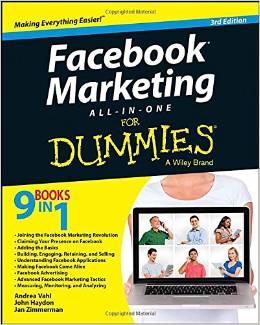By Anita Brady of 123Print
 Every thriving business gives their customers and clients incentives. Think about it — an incentive is the fundamental basis for why people return to a business. If you’re a high-end interior decorator, clients return and recommend you because you consistently provide friendly, expertise. If you sell pet supplies, you balance quality products with a price point that keeps customers returning.
Every thriving business gives their customers and clients incentives. Think about it — an incentive is the fundamental basis for why people return to a business. If you’re a high-end interior decorator, clients return and recommend you because you consistently provide friendly, expertise. If you sell pet supplies, you balance quality products with a price point that keeps customers returning.
Where incentives are most tangible, however, is in reward programs. A person choosing between two sandwich shops might actually be hankering for one place’s sub, yet they patronize the other because they’re one stamp away from getting a free sandwich on their loyalty card. It’s the same principle behind McDonald’s annual Monopoly promotions. There are plenty of people each day who might have eaten elsewhere were they not trying to collect Monopoly pieces for the chance to win free stuff.
If you’re a small business that’s not selling pet supplies or sandwiches, how can you take advantage of loyalty incentives?
Thanks to social media, loyalty programs have grown from the old ‘Buy 7, get 1 free’ cards into a multi-faceted system of endless options, where rewards can be earned for little more than sharing a deal with friends. Most of the predominant options tie directly into Facebook and Twitter, making integration and upkeep a snap. Participants keep track of their rewards and participation levels on their phones, streamlining the redemption process.
If you’re looking to inspire return business (and increase your word-of-mouth marketing), here are six loyalty apps to tune into:
1. Foursquare
Founded in 2009, Foursquare is already the ‘old man’ of the loyalty app club. Designed as a ‘check in’ app that lets users show their friends where they’re having dinner, shopping or hanging out, the app quickly developed into a word-of-mouth marketing tool. Checking in and completing challenges designed by participating businesses (ie. try every burger on the menu in one year) earns users ‘badges,’ which can translate into actual freebies and discounts on their bill.
2. PunchTab
With an endless parade of options, PunchTab has established itself as the dominant leader in loyalty apps, claiming clients from eBay to Arby’s. By syncing between Facebook, Twitter and Google+, PunchTab claims it can multiply traffic on a client’s individual pages by as much as ten times. They accomplish this by setting up badge programs similar to Foursquare that serve a dual purpose. Users earn points for sharing status updates or participating in contests, redeeming them for gift cards to PunchTab affiliates like Barnes & Noble and Groupon. Younger users, in particular, also enjoy collecting the badges, which show up on personal social media profile pages and demonstrate strong affinity for popular brands (essentially cashing in on tween and teenage perceptions of a brand’s ‘cool’ factor).
3. Perkville
Think of Perkville like a simplified PunchTab. While its big brother offers everything from contest curation to giveaways, Perkville sticks to a simple point system. Participating businesses determine how many points will earn users a giveaway or discount. Then the users rack up points through purchases (not unlike a frequent flier miles credit card), social media activity (‘Like’ a status update? Get two points), and referring friends.
4. FidMe
Plenty of businesses still utilize physical loyalty cards, and FidMe provides a link between a wallet full of cards and the digital world. Users scan their cards into the app, allowing them to utilize the bar code and access their account at a register. Popular in Europe, FidMe’s future in the U.S. (and that of its copycat apps) will be determined by the speed at which retailers switch completely over to digital rewards programs. It works just fine in the U.S., so if you’re currently carrying even a couple of loyalty cards, it’s worth checking out to think the bulge in your back pocket.
5. Shopkick
The young gun of the bunch, Shopkick may prove to have the most lasting power. Rewarding users with ‘kicks’ just for entering a store’s physical location, Shopkick accomplishes something brick-and-mortar stores have been losing out on with the advent of online retail — it brings customers through the doors, even if only to browse (of course, browsing often leads to buying). Purchases earn kicks as well, which can be saved up for free gear from participating retailers (which already include Target, Old Navy, Crate&Barrel, Exxon and ToysRUs). Thanks to its sheer simplicity and trackable success (businesses can target individual customers after they’ve been identified as visiting a store), Shopkick could very likely become as widely known as Pinterest or Foursquare by early 2013.
6. Wildfire
One of Google’s latest acquisitions, Wildfire doesn’t exactly fit with the rest of this list. It’s not a Facebook plug-in or a standalone app, but its powerful software creates loyalty outreach that syncs across LinkedIn, Google+, YouTube, Twitter, Pinterest, and, of course, Facebook. Companies hire Wildfire when they want to get the word out across multiple platforms about a new marketing campaign, giveaway or contest. By streamlining the content and tracking results, Wildfire offers personalized loyalty programs. Although it’s a ‘background’ program, its powerful system is likely to continue to grow in popularity and usage by major brands and small businesses alike.
Have you tried out any of these apps as a business owner or a consumer? Which do you prefer? Which ones do you think won’t last?
| Industry veteran Anita Brady is the President of www.123Print.com. 123Print supplies high quality customizable items like business cards, letterhead, banners, yard signs and other promotional printing materials for small businesses and solo practitioners. |






















